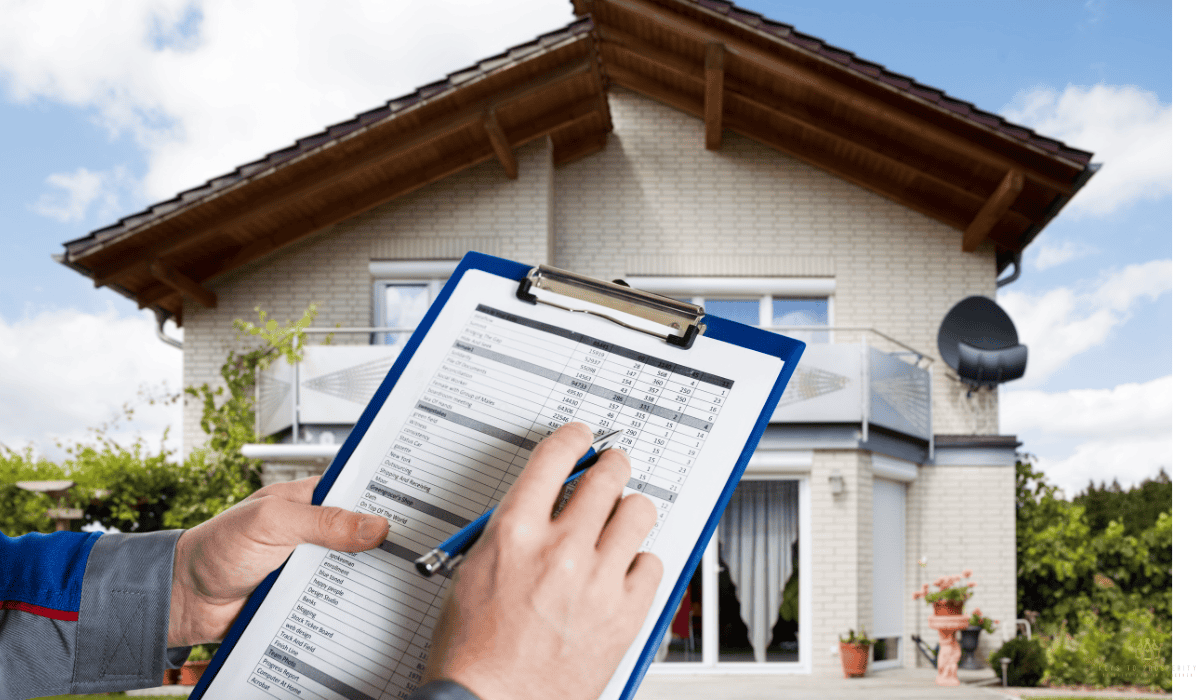
Commercial real estate is a powerhouse in the U.S. economy, driving roughly $2.5 trillion in development and operational contributions to the nation’s GDP in 2023 alone.
That’s a massive market, but from our experience, commercial real estate investors, brokers, and lenders know that even the most promising deals can hit a wall if commercial property valuation methods aren’t applied accurately.
Deals fall apart, financing gets delayed, and property developers can miss out on profitable opportunities, all because of valuation gaps.
This guide is here to cut through the confusion. We’ll break down the core valuation methods, explain when to use each approach, and share expert strategies that help property investors, appraisers and asset managers get it right the first time.
In our previous article, we discussed cap rate analysis in commercial real estate to assess a property’s profitability, but that’s just one piece of the puzzle. Investors also need to know how to analyze a commercial property using various financial metrics and market conditions.
If you’re focused on long-term growth, our next article on risk-adjusted returns in commercial real estate can help you make smarter investment choices.
Overall, the goal is to ensure every reader walks away with the knowledge and confidence to accurately determine a commercial property’s value, no matter the market conditions in 2025.
Short Summary
- Accurate commercial property valuation methods are crucial for fair pricing and successful commercial real estate deals.
- The three main approaches, income capitalization approach, sales comparison approach, and cost approach, each work best in different scenarios.
- Net operating income, capitalization rates, and future cash flows are key to determining commercial property’s value using the income approach.
- Advanced techniques like gross rent multiplier (GRM), price per square foot, and analyzing similar properties help fine-tune property valuation.
- Commercial real estate professionals and valuation software improve accuracy, while keeping up with market stability ensures reliable results.
Understanding The Core Commercial Property Valuation Methods
Getting a commercial property’s value right can make or break a deal. We’ve seen perfectly good opportunities slip away because someone guessed instead of using the right valuation methods. When working with commercial real estate investors, it quickly becomes clear: knowing these approaches is non-negotiable.
The Three Primary Valuation Approaches
Every professional in commercial real estate valuation leans on three main methods:
Income Capitalization Approach
Best for income-producing properties like office buildings and apartment complexes. We use it when the cash flow from rent is the main driver behind a commercial property’s price. The formula revolves around net operating income and capitalization rates (cap rate), two numbers that need to be spot on.
Sales Comparison Approach
This one feels familiar, even for those from the residential real estate side. It’s all about looking at comparable properties (comps) that have recently sold to gauge the subject property’s market value. We often turn to this approach when dealing with smaller retail spaces or when local market data is robust.
Cost Approach
Sometimes, there just aren’t enough similar properties to compare. Or the property is brand new. That’s when we calculate the cost to rebuild the structure from scratch, adjusting for depreciation. Construction methods and land value become critical here.
When to Use Each Method
Choosing the right approach depends on the deal:
- We lean on the income approach when the focus is gross rental income and cash flow potential.
- The sales comparison method works well when there’s plenty of local market activity and data on comparable properties.
- The cost approach is a go-to for unique properties or developments still in progress.
Using all three together can give a clearer picture. We’ve had lenders ask for multiple approaches before approving financing.
Why Market Data Matters
Good valuation starts with accurate market data. Appraisals often fall flat because the comps were outdated or didn’t match the commercial property type. Knowing local market activity gives us the edge.
Tips we swear by:
- Subscribe to commercial real estate data platforms.
- Visit properties in person whenever possible.
- Talk to commercial real estate professionals. They know the pulse of the market.
Combining reliable data with the right valuation process has helped us close deals smoothly and avoid those last-minute surprises.
Income Capitalization Approach: Determining Commercial Property’s Value

When working with commercial property valuation methods, the income capitalization approach is often the one we reach for first. This is true especially when dealing with rental properties like office buildings, retail spaces, or large apartment complexes.
It’s the go-to when a property’s income potential drives its worth. From our experience, nailing this approach has helped our clients, whether commercial real estate investors or commercial lenders, avoid overpaying or underselling.
Net Operating Income (NOI) – The Starting Point
Everything begins with net operating income. Without it, this approach just doesn’t work.
- Take the gross rental income from the property.
- Subtract operating expenses like property management, maintenance, insurance, and taxes.
- What’s left is the net operating income—the heartbeat of the property’s value.
We always remind clients that operating expenses are more than just the bills they see. Hidden costs like occasional repairs or vacancies can quietly eat away at gross income.
Capitalization Rates – What The Market Says
Next up is the capitalization rate, or cap rate. This is a percentage that reflects the return an investor expects on their money.
- Cap rates vary depending on location, property type, and market conditions.
- A property in a prime downtown location might have a lower cap rate (say, 5%), while one in an uncertain market could be at 8% or more.
- We always check local market activity and consult commercial real estate professionals to ensure our cap rate aligns with reality.
Current market value is found by dividing net operating income by the capitalization rate. It’s simple math, but accuracy is everything.
Future Cash Flows And Discounted Cash Flow (DCF) Methodology
Sometimes, we need to think beyond the present. That’s where future cash flows and discounted cash flow (DCF) come in.
- We estimate the property’s gross rental income and operating expenses over several years.
- We project the property’s future value (like its sales price down the line).
- Then, we discount all those cash flows back to present value using a rate that reflects risk.
We’ve found DCF most useful for commercial real estate investment properties with fluctuating income or planned upgrades.
Stability Of Rental Income – Don’t Overlook It
No matter how good the math looks, if rental income isn’t steady, the whole thing falls apart.
- Check the length and terms of current leases.
- Assess tenant reliability. Chasing rent every month isn’t fun, believe me.
- Consider average lease cost in the area. Overcharging tenants may lead to vacancies.
A reliable rental income stream gives confidence in the property’s worth and smooths out market stability concerns. Deals can falter simply because income projections were overly optimistic.
If you understand both the math and the market, you pretty much will get the income approach right. That’s how we help clients buy with confidence and avoid costly missteps.
Advanced Commercial Real Estate Valuation Techniques

When basic commercial property valuation methods don’t quite cut it, we turn to more advanced techniques. These help fill in the gaps, especially when we’re dealing with unique properties or uncertain market conditions.
From our experience, leaning on multiple approaches often paints a clearer picture of a property’s true worth. Below are a few that we’ve found especially useful:
Sales Comparison Approach Methodology
The sales comparison approach methodology is straightforward but powerful. We compare the property in question to similar ones that have sold recently. It’s like checking what the neighbors sold for, but with more precision.
- Properties should match in construction methods, age, size, and location.
- Adjustments matter. If a comparable building has new HVAC, but ours doesn’t, we account for that.
- Don’t forget local market data. We’ve seen prices swing between blocks in hot urban markets.
This method works best when there’s plenty of sales activity. When sales are sparse, we pull in other techniques.
Gross Rent Multiplier (GRM) Calculations
If you want something quick and handy, especially for smaller commercial real estate investment deals, you need gross rent multiplier (GRM). It’s a ratio comparing property price to gross rental income.
GRM = Property Price ÷ Gross Rental Income
If a similar building sold for $1 million with $100,000 annual rent, GRM is 10. We then multiply GRM by our property’s gross income to estimate its value.
We rely on GRM calculations for smaller offices and retail units, but it’s less accurate for large or complex buildings. It’s a ballpark figure, not a final say.
Cost Approach Considerations
The cost approach asks, “What would it cost to rebuild this from scratch?” It’s especially helpful when properties are new or have unique features.
- First, estimate the replacement cost based on construction methods and materials.
- Next, factor in depreciation from age or wear and tear.
- Finally, add land value based on local market activity.
We’ve used this when buyers wanted reassurance that they weren’t overpaying for a brand-new warehouse.
Price Per Square Foot Analysis
Price per square foot analysis is simple but effective, especially in fast-moving markets.
- Divide the property price by the building’s square footage.
- Compare it to similar properties in the area.
- Adjust for differences like condition or operating expenses.
This method is especially useful during site visits. If the per-foot cost seems off, it’s a red flag to dig deeper.
Combining these techniques gives us a sharper view of a property’s true market value. No single method is perfect, but together, they get us pretty close.
Professional Tips For Accurate Commercial Property Valuation

Getting the right commercial property valuation methods can mean the difference between a profitable deal and a costly mistake. Even seasoned professionals can overlook small details that throw off valuations.
We’ve learned a few lessons over the years, some the hard way. So, below are the tips we wish we had from the start.
Watch For Common Valuation Mistakes
Mistakes creep in more often than you’d think. Numbers that look great on paper can fall apart once you dig deeper.
- Overestimating rental income stability can inflate property value.
- Ignoring operating expenses leads to misleading net operating income figures.
- Relying too much on one method instead of blending multiple commercial property valuation methods can skew results.
Probably the best advice: Double-checking every assumption keeps the numbers honest.
Assess Market Stability Carefully
Markets shift. Fast. We’ve valued properties in what seemed like stable neighborhoods, only to see values dip six months later. That’s why we always ask:
- Are businesses opening or closing nearby?
- Is there new development that could affect similar properties?
- Are rents rising steadily or flattening?
Market stability considerations can reveal whether the current price holds or is at risk of dropping.
Use Tools And Software To Save Time
We love old-school methods, but tech speeds up the process and catches details we might miss.
- Costar and LoopNet offer market data on sales comparison approach methodology and price per square foot analysis.
- Argus helps us model discounted cash flow methodology for more complex deals.
- PropertyMetrics simplifies gross rent multiplier (GRM) calculations and basic projections.
These tools cut hours off valuations and boost confidence in our numbers.
Rely On Commercial Real Estate Professionals
Even with great tools, nothing beats a second set of eyes. We lean on commercial real estate professionals for their insights on:
- Local construction methods and build quality.
- Lease terms that impact future cash flows.
- Current market trends affecting valuations that data alone won’t reveal.
Working with appraisers, brokers, and property managers keeps us sharp.
Document Everything
Accurate valuations don’t just happen. Keeping records protects us if numbers get questioned later.
- Always save income statements, lease agreements, and repair estimates.
- Write down adjustments made during cost approach considerations or sales comparison approach methodology.
- Clear reports make us look professional and help future buyers understand our rationale.
Combining these tips helps us value properties with confidence and avoid costly surprises later.
Final Thoughts
Valuing commercial property accurately takes practice, solid data, and the right approach for each situation. Relying on multiple commercial property valuation methods helps minimize risk and ensures fair pricing.
Keeping up with market trends, using the best tools, and consulting commercial real estate professionals can make all the difference. Need expert guidance on your next valuation? Reach out to a professional for a detailed, accurate assessment.
Frequently Asked Questions
What Is The Most Reliable Method For Valuing A Commercial Property?
There’s no one-size-fits-all method, but the income capitalization approach is often the most reliable when the property generates steady rental income. It factors in net operating income and capitalization rates, making it a top choice for commercial real estate investors.
How Is Net Operating Income Calculated In Commercial Real Estate Valuation?
Net operating income is calculated by subtracting operating expenses from the gross rental income the property generates annually. It excludes mortgage payments and taxes, focusing only on the property’s income potential.
When Should The Sales Comparison Approach Be Used?
The sales comparison approach works best when there are plenty of comparable properties recently sold in the same area. It helps determine fair market value by analyzing the property’s price per square foot compared to similar properties.
What Is A Gross Rent Multiplier (GRM), And How Is It Useful?
Gross rent multiplier (GRM) is the ratio of a commercial property’s price to its annual gross rental income. It’s a quick way to estimate property valuation but works best alongside other valuation methodologies for a more complete picture.






